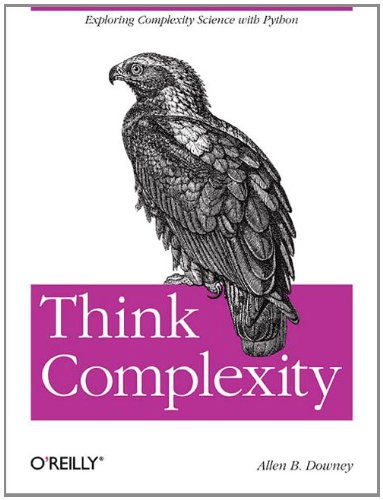
Think Complexity: Complexity Science and Computational Modeling
by Allen B. Downey
Publisher: Green Tea Press 2012
ISBN/ASIN: 1449314635
Number of pages: 146
Description:
This book is about complexity science, data structures and algorithms, intermediate programming in Python, and the philosophy of science. The book focuses on discrete models, which include graphs, cellular automata, and agent-based models. They are often characterized by structure, rules and transitions rather than by equations.
Download or read it online for free here:
Download link
(1.2MB, PDF)
Similar books
 Lecture Notes on Computational Complexity
Lecture Notes on Computational Complexityby Luca Trevisan
Notes from a graduate courses on Computational Complexity. The first 15 lectures cover fundamentals, the remaining is advanced material: Hastad's optimal inapproximability results, lower bounds for parity in bounded depth-circuits, and more.
(15276 views)
 Communication Complexity (for Algorithm Designers)
Communication Complexity (for Algorithm Designers)by Tim Roughgarden - Stanford University
The two biggest goals of the course are: 1. Learn several canonical problems that have proved the most useful for proving lower bounds; 2. Learn how to reduce lower bounds for fundamental algorithmic problems to communication complexity lower bounds.
(6289 views)
 Around Kolmogorov Complexity: Basic Notions and Results
Around Kolmogorov Complexity: Basic Notions and Resultsby Alexander Shen - arXiv.org
Algorithmic information theory studies description complexity and randomness. This text covers the basic notions of algorithmic information theory: Kolmogorov complexity, Solomonoff universal a priori probability, effective Hausdorff dimension, etc.
(6589 views)
 Parallel Complexity Theory
Parallel Complexity Theoryby Ian Parberry - Prentice Hall
The rapid growth of parallel complexity theory has led to a proliferation of parallel machine models. This book presents a unified theory of parallel computation based on a network model. It is the first such synthesis in book form.
(9721 views)